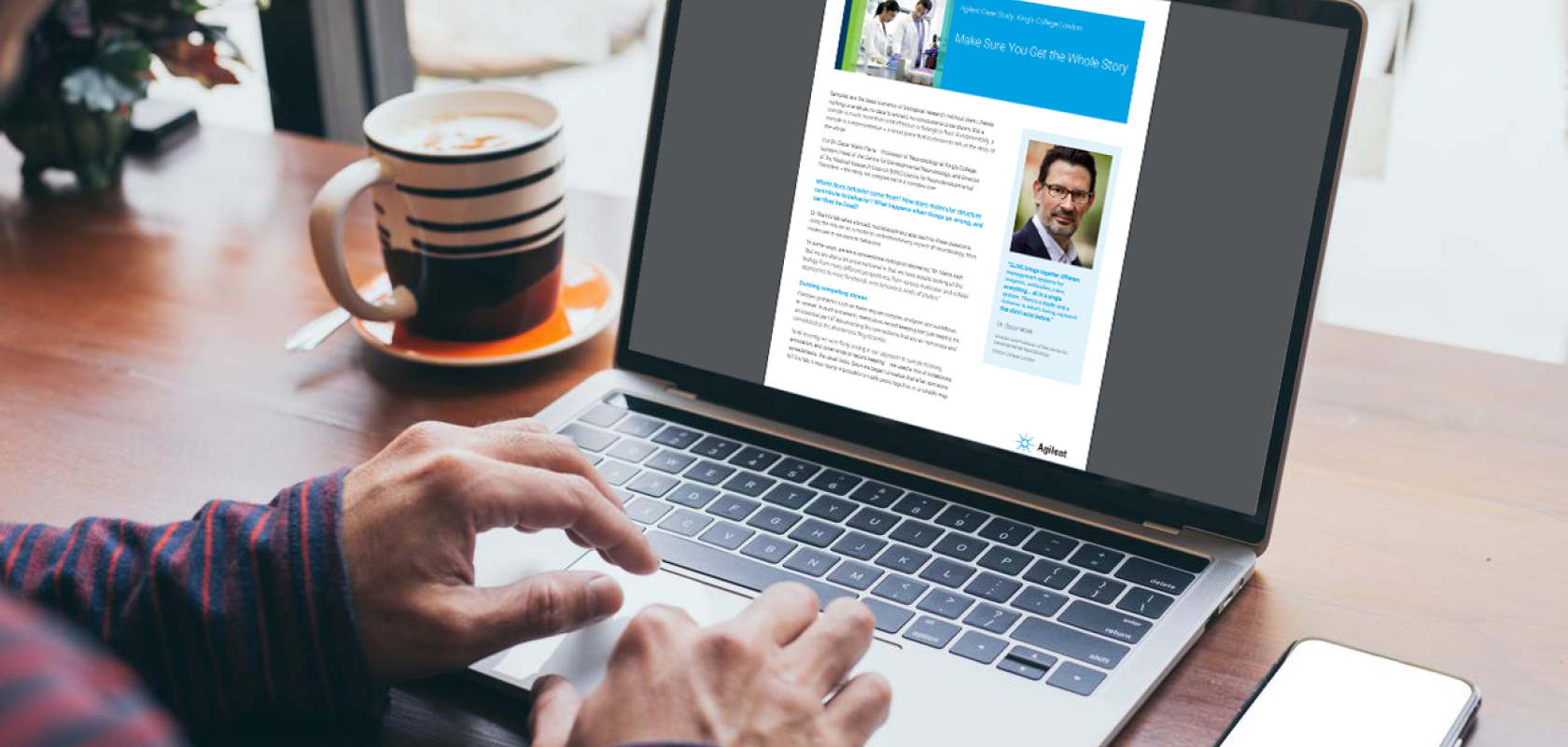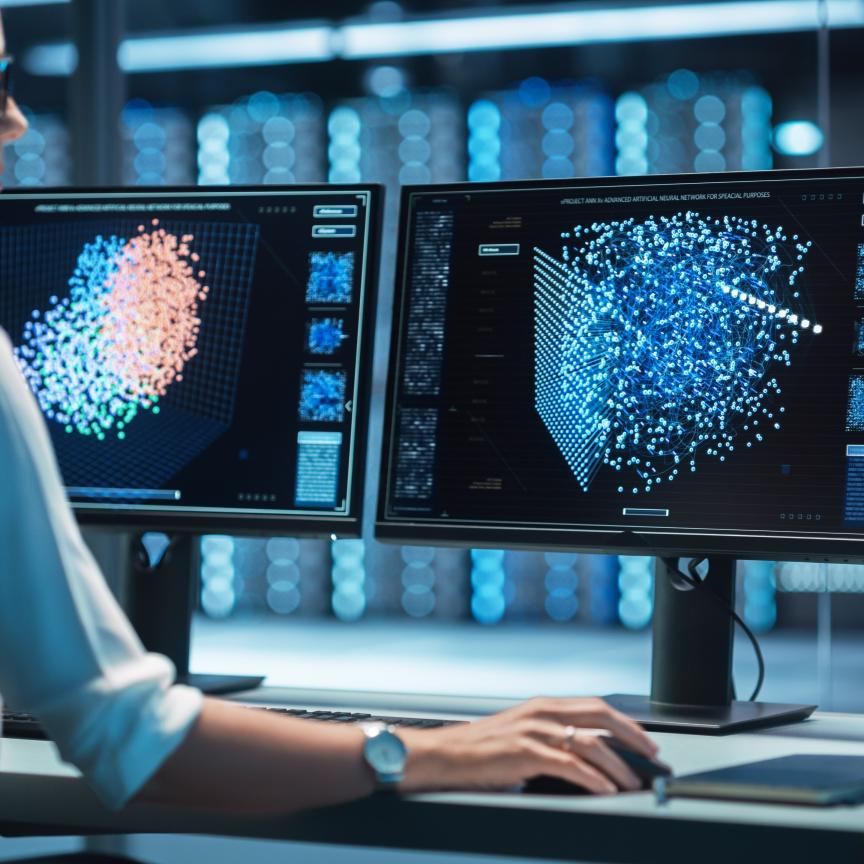Samples are the basic currency of biological research; without them, there's nothing to analyse, no data to extract, no conclusions to be drawn. But a sample is much more than a bit of tissue or biological fluid. Fundamentally, a sample is a representative – a small piece that is chosen to tell us the story of the whole. For Dr Óscar Marín Parra, Professor of Neurobiology at King’s College London, Head of the Centre for Developmental Neurobiology, and Director of the Medical Research Council (MRC) Centre for Neurodevelopmental Disorders – the story his samples tell is a complex one.
Where does behaviour come from? How does molecular structure contribute to behaviour? What happens when things go wrong, and can they be fixed?
Dr Marín's lab takes a broad, multidisciplinary approach to these questions, using the mouse as a model to understand every aspect of neurobiology, from molecules to neurons to behaviours. "In some ways, we are a conventional biological laboratory," Dr Marín says. "But we are also a bit unconventional in that we have people looking at the biology from many different perspectives, from various molecular and cellular approaches to more functional, even behavioural, kinds of studies."
Building compelling stories
Complex problems such as these require complex analyses and workflows to unravel. In such a scenario, meticulous record keeping isn't just helpful; it's an essential part of documenting the connections that are as numerous and convoluted as the phenomena they describe. "Until recently, we were fairly analogue in our approach to sample tracking, annotation, and other kinds of record keeping – we used a mix of notebooks, spreadsheets, the usual tools,” he says. “Soon, we began to realise that, after someone left the lab, it was nearly impossible to really piece together, in a reliable way what had been done; where things had been stored – those kinds of things – even when we were being very organised. With the kind of big-picture studies we were building, we needed to be able to continue to use that data as we moved toward publication, regardless of turnover in the lab. But the level of detail we needed just wasn't being captured consistently.”
Moving forward
Migrating to a digital platform for information management was clearly the way forward, but there were hurdles to overcome. Despite the obvious advantages, some habits – and mindsets – would need to adjust to the new paradigm. "Even though we knew we needed it, it's still a big decision, and we were anticipating a transition that we feared could be, in some ways, quite painful," Dr. Marín explains. "We became aware of Agilent SLIMS through a postdoc who had used it in a previous position, and that experience was important in our decision making. There are a number of systems out there that are essentially online solutions, but you don't really get an underlying sense of how they work. There are even solutions that are free, but for our purposes, long-term continuity was essential. We couldn't afford to invest the time and effort in switching to a system just to have it disappear in two years or become unstable. Agilent's longstanding global presence helped us have the confidence to move forward, and I think the relationship has worked really well."
Still, his was a busy lab, and there was work to be done. Students, postdocs, and other scientists had joined the lab for the opportunity to be part of the unusual multidisciplinary mix. There were samples to analyse, data to generate, papers to publish and careers to build. There were still mysteries to decipher. Dr Marín describes how they approached the transition: "We were very aware of the tension between the needs of the individuals to move toward their own future and the needs of the lab to move away from methods of the past," he explains. "We decided that rather than just tell everyone, 'Forget what you've been doing; today we do it this way', we would instead take a more gradual approach. A few researchers transitioned to the new system at first, doing the learning and heavy lifting; then gradually, more adopted it. This approach has allowed the work in the lab to continue and has also allowed us to adjust and tailor how we use SLIMS as we have brought it on board and learned more."
Putting it all together
"At the lab level, SLIMS brings together different management systems for, say, reagents, antibodies, mice, everything; all in a single system. So, there's a depth and a richness to what's being captured that didn’t exist before. It all gets connected and woven into the story of the experiment in an almost automatic way. When the time comes to repeat valuable experiments – or avoid repeating bad ones – SLIMS allows us to piece together a more complete record. “There's a lot of important information that we need to stay on top of. We need to be sure, for example, that we're not doing something wrong with the mouse genotypes. The fact that the system integrates so many different types of information has made it a very good addition for us. The more you use it, the more you see the advantages, and the more you are able to improve your protocols, your flow of information – really improve how you work.”
The measure of success
Ultimately, what will success with SLIMS look like? Dr Marín has some ideas. "At this point, we are still focused on making sure 100% of our people adopt the system as part of their routine,” he explains. "Beyond that, a key test will be traceability – how easy is it for me to trace a given experiment that’s in a notebook from someone who left the lab, say, six months or a year ago? How much time is needed to trace a set of results or material? But with the system now in place, these are becoming answerable questions. We can start to get real measures of the efficiency of our operation. The real benefit of the system will be in how it helps the entire lab move forward.” Beyond its contribution to the continued success of his lab, Dr Marín sees SLIMS as helping him fulfil a responsibility to ensure those moving on from his lab are as prepared as possible for the careers that await them. “Many people who leave my lab are only a few short years from starting labs of their own,” he says. “If I can help them build a digital results management approach like SLIMS into their way of thinking, their way of working, they stand a much better chance of succeeding than if they leave only knowing manual methods.”
Learn more
www.agilent.com/chem/agilentslims


